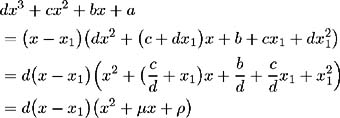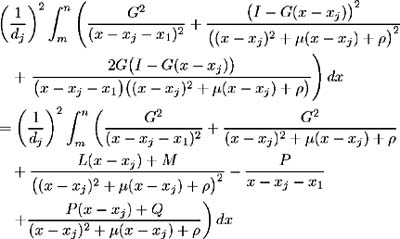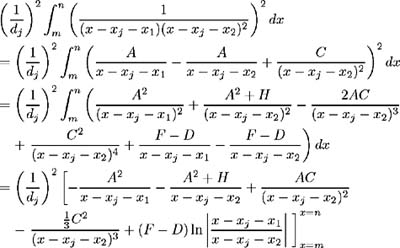Integrating the inverse of the square of a cubic polynomial
The required integral has the form:
First, consider a cubic polynomial of the form:
then according to the methodology detailed in [ 42 ] define the following variables :
Now, three cases must be considered :
-
y 2 N ˆ’ h 2 > 0;
-
y 2 N ˆ’ h 2 = 0;
-
y 2 N ˆ’ h 2 < 0.
y 2 N ˆ’ h 2 > 0 . Here, the cubic polynomial has only one real root, given by:
Hence:

where ¼ = ![]() + x 1 and =
+ x 1 and = ![]() .
.
Applying this to (A.2.) the integral takes the form:

where:
Further:

where:

and so:

where · = ½ ¼ and = ![]() .
.
y 2 N ˆ’ h 2 = 0 . For this case there are three real roots, with a repeated root. Again from the methodology in [ 42 ], the three roots are:

Substituting into (A.2.) we have:

where:

y 2 N ˆ’ h 2 < 0 . Here we have three distinct real roots. These roots are:

where [7] :
Again, substituting into (A.2.), we evaluate the integral as:

where:

and
[7] As defined in (A.3.d), h = 2 d 3 .
EAN: 2147483647
Pages: 132
- Chapter II Information Search on the Internet: A Causal Model
- Chapter IX Extrinsic Plus Intrinsic Human Factors Influencing the Web Usage
- Chapter XI User Satisfaction with Web Portals: An Empirical Study
- Chapter XII Web Design and E-Commerce
- Chapter XVIII Web Systems Design, Litigation, and Online Consumer Behavior